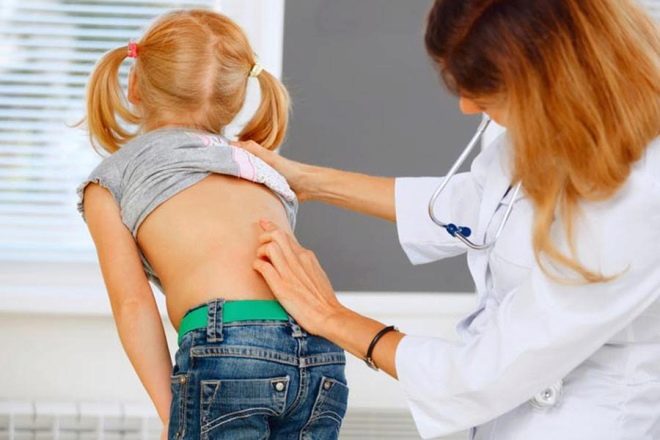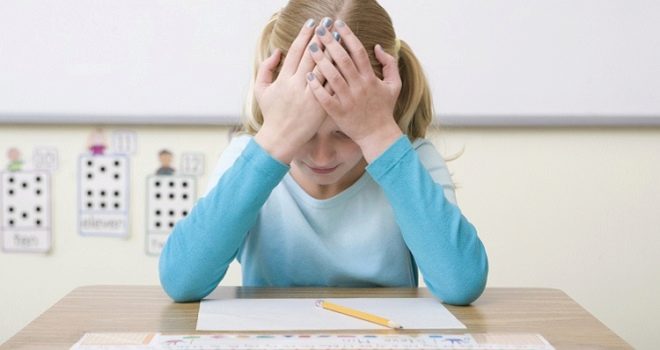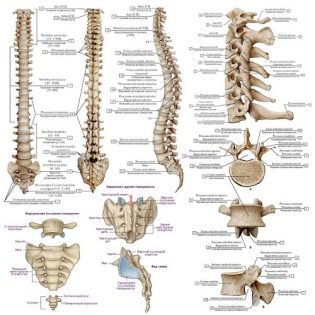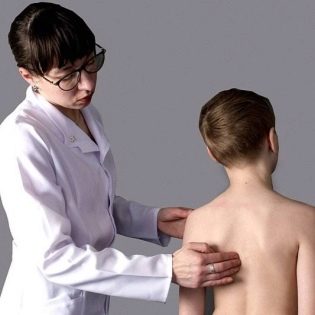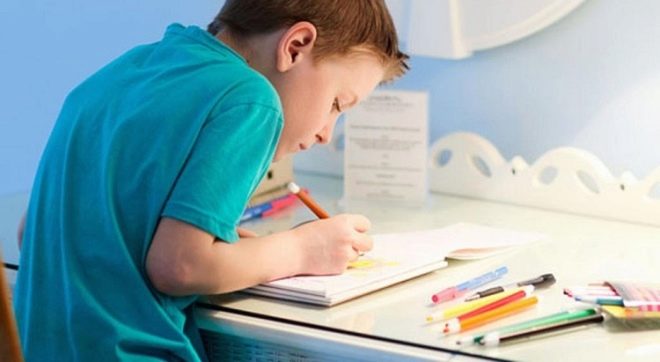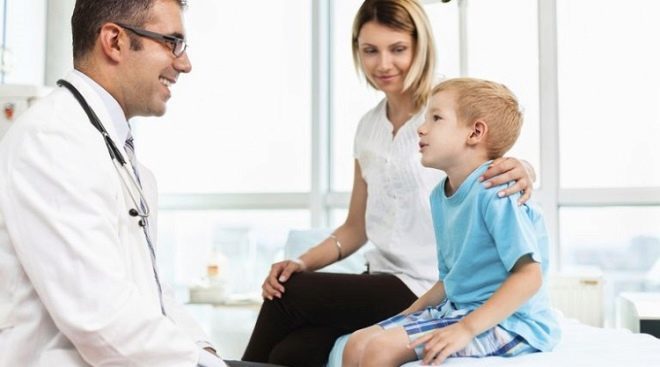Psychosomatics of spinal diseases in children and adults
Very often, the pain that appears in the spine, in the back, is associated with physical exertion, with a way of life. This is a rational grain. But no less than the health of the spine of adults and children is affected by the way of thinking and world perception. A subtle, but strong relationship between human diseases and his psychological characteristics and state of mind is studied by a special section of medical science - psychosomatics.
In this article we will talk about what psychosomatic causes can be diseases of the spine and how to cope with them.
Psychosomatic value of the vertebrae
It should be noted that lifestyle and physical activity are very important for the health of the back, for the formation of correct posture, but very often orthopedists face situations when parents bring a child who plays sports, does gymnastics in the morning, does not spend more than an hour at the computer per day, does not read lying, but he nevertheless develops scoliosis. Or vertebral injuries sometimes happen in the most unexpected situations, when the fall was insignificant, and in general nothing foreshadowed trouble. In this case, it is worth considering the possible psychosomatic causes. Parents have provided all for the health of the back, but did not consider the influence of some mental factors on the health of the vertebrae.
In psychosomatic medicine, the spine is treated in the same way as in conventional anatomy - as a support. For a person, the vertebral column is the ability to stand upright, walk, sit, change direction. From the point of view of psychosomatics, the spine is confidence, reliability, security, and safety.. At the same time, different parts of the spine are closely related to different emotional and mental spheres, but they are all united in one word - “confidence”.
Thus, the disease of the spine often develops in people uncertain, feeling unnecessary, unnecessary. Self-doubt, in others, lack of confidence in the closest ones - mom and dad, lack of confidence in their abilities, in the future - the main cause of spinal diseases in both adults and children.
There is another type of people (of different ages), who is inclined not only to spinal curvatures, but also to spinal fractures. it people who are used to taking on too many responsibilities. If the burden is unbearable, the spine must sufferand here it does not matter anymore whether the child goes to the section or sits at the computer.
A child who was “crushed” by the authority of the parents, who shouldered too many of their demands, duties, extra classes, and sections, often suffer from a stoop.
Adults who carry heavy tension, negative emotions, inescapable grief from failures, problems in their personal life, at work, also slouch too hard, and almost do not pay attention to it. But once the spine begins to hurt, because an unnatural position for it can not affect the functioning.
If the inner emotional load and physical fatigue peak at the most critical point, spinal injuries occur - fractures, displacements, cracks.
Both in children and adults pains in the spine often appear as a physical manifestation of the fear of losing support, support of loved ones. Such a reason is especially common in children, if the relationship with parents leaves much to be desired.
Divisions of the spinal column and its afflictions
In order to understand why and where problems with the spinal column came from, you need to know in which part of it there are pathological changes:
- Pain and pathology of the sacral area and lumbar most often they symbolize a strong fear of losing material support, work. That is why children in this department pain and changes are very rare. Low back pain is more typical of parents who are worried about their financial situation, grandparents, but not even because of their age, but because of even greater concern about the financial side of life. Back pain can cause not just the thought that there is not enough money, but obsessive thoughts that do not give rest, literally pursue a person. The greater the fear in this case, the stronger the lumbosacral pain.
- Diseases of the cervical spine - illnesses of insecure people, who often feel that nobody understands them, does not support, does not love, people who are afraid to look back, into their past, who are afraid to look back over what is behind their back, are afraid of rumors and gossip, are not attentive to others, are selfish. Confidence that people around are plotting against or conspiring can lead to very strong bouts of pain with recoil in the back of the head, shoulders. Often pain in the neck is a problem of great stubborn people who categorically do not want to be interested in what is happening around, because they are sure only of their own right.
- Thoracic spine suffers from those who constantly cultivate a sense of guilt. In adults, often - guilt in front of a sexual partner, close relatives, in children - a sense of shame and guilt for not complying with the expectations of parents, especially if these expectations were initially too high (but the child doesn’t realize this!).
Interestingly, the pain in the thoracic spine often develops in those who do not trust people, are afraid of “stabbing in the back”, are suspicious of new and old acquaintances.
Disease development mechanisms
How it all works is pretty simple to understand. A person experiencing tremendous guilt in front of a close relative or excessive mental fatigue due to the fact that he himself took upon himself moral and physical obligations towards someone who is now in trouble, gradually begins to slouch. Posture is changing. Note that in a state of depression, depression, guilt, all people lower their shoulders. If this condition lasts a long time, then lowered shoulders and a neck slightly pushed forward lead to the fact that one group of muscles becomes too tense and the other relaxes. Blood circulation and transmission of nerve impulses are disturbed - pain appears.
Spinal pathologies in children develop much more difficult. This mainly occurs at the age when there is already some demand from the child, and therefore (any orthopedist will confirm this) most often problems with the health of the spine in children are detected by the age of 7-9, and after 12-14 years. What are these years? This is the beginning school visits, adolescence entry. In both of these important periods, the requirements of parents and society for the little man increase.. The list of his responsibilities is expanding. Parents with good intentions write children in several sections, in a music school and another couple of foreign language courses.
The child is very afraid of losing their disposition, it is unpleasant for him to grieve them, he is afraid of not meeting their expectations. He tries to do everything, to cope everywhere, but the loads are unbearable. Gradually develop pain (due to muscle and nerve clamps), and then the pathology of the spinal column.
Pain in the spine - a clear "bell", saying that it is time to change something. If kyphosis, scoliosis, intervertebral hernia is detected, this is already a condition in which pain and the associated problem have been ignored for a long time. This is a consequence of the fact that the problem has existed for a long time.
Parents should remember that the main mental and psychological attitudes with which the child goes through life, they create, when the child is still small.
To avoid problems with the spine of a son or daughter, you need to monitor the load and the level of expectations that are placed on the child, not to demand too much from him. Also, installations that say that “Life is hard, difficult”, “Going to the goal is always hard” are pernicious. A child who grows up on such "truths" will seldom achieve success, and if there is, it is clearly not without prejudice to his health.
How to find the true cause and recover?
If a spinal column is found in a child or an adult, or from time to time pain starts, which cannot be explained as a result of a medical examination (not related to objective medical reasons), you should ask yourself what is being done wrong.
To help find the cause of the curvature or displacement of the intervertebral disc can help techniques developed by Louise Hay, Liz Burbo, Valery Sinelnikov. If their tables do not give an answer or you cannot recognize the cause yourself, you should contact a psychologist, psychotherapist or psychosomatist. These people, taking into account the personality of the patient and his personal circumstances, will help to find the “problem” link and gently eliminate it.
Since the discovery of the reason when it becomes clear what caused the spinal disease, the healing process begins, getting rid of the disease. An adult patient should clearly understand that he created his own problem, and for a long time “did not hear” the body’s signals that he had assumed too much or did not want to let go of the feeling of guilt.
If we are talking about a child, then parents should understand that it is they who are to blame for his problems with the spinal column. Elimination of a negative factor, cause, reassessment of resentment or feelings of guilt, changing the attitude to their responsibility, to fear losing support or being left alone usually contribute to the normalization of the spine.
Psychosomatic medicine in no way encourages people to abandon traditional treatment. If someone, pretending to be a psychosomat, says that nothing should be taken and done, it is enough just to think positively and the operation will not be necessary, then you should know that there is a charlatan.
A psychosomatic approach is needed to make recovery faster and more successful, The recommendations of the attending physician should be strictly followed.. Knowledge and understanding of the mechanism of development of diseases of the spine in close relationship with the psyche will help prevent recurrence and will be an excellent prevention. Traditional treatment and simultaneous psycho-correction of the cause of the disease is the best way to quickly get rid of the disease. and more about him not to remember.
Is treatment possible only with psychocorrection? Yes, but only in cases where the disease is exclusively psychogenic in nature, and this with regard to diseases of the musculoskeletal system happens quite rarely. More often, this is a complex of influences, including our negative thoughts, attitudes, uncertainty, guilt complex and fears of being left without help and support.


